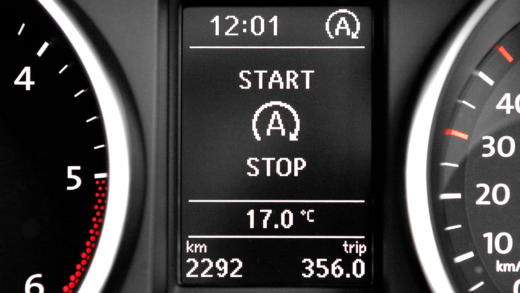Breathalyzers measure blood alcohol content through exhaled breath, using technology like fuel cell sensors. Myths persist about cheating breathalyzer tests, stemming from cognitive biases and misinformation. Cheating can lead to severe legal consequences, including increased penalties and license suspension. Breathalyzer accuracy is generally reliable but influenced by factors like calibration and individual physiology. If pulled over, stay calm, know your rights, and consider legal advice.
What is a Breathalyzer?
A breathalyzer is a device designed to measure the blood alcohol content (BAC) in a person’s breath. Its primary purpose is to help law enforcement determine whether an individual is under the influence of alcohol while operating a vehicle. Essentially, it provides a quick and non-invasive method of assessing intoxication levels.
Breathalyzers operate by analyzing the alcohol content in a person’s exhaled breath. When a person consumes alcohol, it enters their bloodstream and is eventually expelled through the lungs. The breathalyzer captures a sample of this breath and uses specific chemical reactions to estimate the amount of alcohol present.
How Breathalyzers Work
Understanding how breathalyzers work involves a bit of science. Most modern breathalyzers utilize a technology called fuel cell sensors. These sensors react with alcohol molecules in the breath, producing an electrical current that correlates with the concentration of alcohol in the sample. The device then converts this current into a BAC reading, which is displayed digitally.
Another common type of breathalyzer is the semiconductor-based device. This type uses a semiconductor material that changes resistance when alcohol is present. While effective, fuel cell sensors are generally considered more accurate and reliable compared to semiconductor devices.
Accuracy can be influenced by various factors, including calibration, the presence of other substances in the breath, and even the individual’s physiological characteristics. Regular maintenance and calibration of the device are crucial for ensuring precise measurements.
Urban Legends About Breathalyzers
There are numerous myths about breathalyzer tests that circulate among the public. One of the most common misconceptions is that certain foods or drinks can mask the presence of alcohol in the breath. For example, some people believe that eating a piece of bread or drinking coffee can lower their BAC readings. Unfortunately, these methods are not effective.
Another urban legend is that certain medications can interfere with breathalyzer results. While some medications may affect BAC readings, the idea that one can cheat a breathalyzer with specific substances is largely unfounded. Such misconceptions can lead individuals to make poor decisions regarding their safety and legal responsibilities.
Understanding these myths is essential, as it can influence behavior and decision-making when it comes to alcohol consumption and driving. Awareness of the facts surrounding breathalyzers helps individuals make informed choices and promotes responsible behavior on the road.
The Penny Method: Myth or Reality?
The penny method is a popular urban legend suggesting that holding a penny in your mouth can help you pass a breathalyzer test. The idea is that the metallic taste will somehow mask the alcohol present in your breath. However, this belief is entirely unfounded. Holding a penny does not alter your blood alcohol content (BAC) or influence the breathalyzer’s readings.
In reality, breathalyzers measure the amount of alcohol in your breath, not the taste or smell. When you consume alcohol, it enters your bloodstream and affects your body, regardless of any penny in your mouth. Therefore, relying on such a method could lead to serious legal consequences.
Scientific Evidence for the Penny Method
Scientific studies have repeatedly shown that the penny method lacks any credible backing. Research indicates that there is no chemical reaction between a penny and alcohol that would impact breathalyzer results. According to a study published in the Journal of Forensic Sciences, breathalyzer accuracy is based on physiological processes rather than external factors like oral objects.
For example, one study conducted by the National Highway Traffic Safety Administration found that breath alcohol content is directly correlated to blood alcohol content, independent of any other oral substances. Therefore, the penny method does not hold up against scientific scrutiny and should not be relied upon.
Other Rumored Methods to Pass a Breathalyzer
Numerous rumored methods to cheat a breathalyzer circulate among people, often leading them to make poor choices. Here are a few common ones:
- Drinking Water: Some believe that drinking water can dilute alcohol in the system. While hydration is important, it does not effectively lower BAC levels.
- Eating Food: Consuming food before or after drinking is thought to soak up alcohol. However, this only delays alcohol absorption, not eliminate it.
- Mouthwash: There’s a myth that using mouthwash containing alcohol can confuse the breathalyzer. In reality, it may actually raise the readings.
- Exercise: Some think that working out can help burn off alcohol faster. Unfortunately, this does not influence BAC levels in a meaningful way.
These methods are based on misconceptions and can lead to dangerous situations. The best approach is to avoid drinking and driving altogether.
Why Do People Believe These Myths?
People often hold on to myths about breathalyzer tests due to a combination of misinformation, fear, and cognitive biases. When faced with the potential consequences of a DUI charge, individuals may seek out any available method to justify their actions or mitigate their fears. This leads to the acceptance of urban legends, like the penny method or other tricks, as viable options for avoiding legal trouble.
Psychologically, cognitive dissonance plays a significant role. When someone drinks and drives, they may experience discomfort about their behavior. To alleviate this discomfort, they may latch onto myths that suggest they can cheat the system. Additionally, social influences—such as friends or online communities—can perpetuate these false beliefs, creating an echo chamber where misinformation thrives.
Moreover, many people do not fully understand how breathalyzers work, which leads to misconceptions about their reliability and function. This lack of knowledge can create a false sense of security, encouraging risky behaviors.
Legal Consequences of Cheating a Breathalyzer
The legal ramifications of attempting to cheat a breathalyzer can be severe. Many jurisdictions treat any effort to deceive a breathalyzer test as a serious offense. Consequences can include:
- Increased Penalties: If caught attempting to cheat, a driver may face harsher penalties than they would have for a DUI alone.
- License Suspension: Legal repercussions can include the suspension of one’s driving privileges, which can complicate daily life.
- Criminal Charges: In some areas, tampering with a breathalyzer can result in criminal charges, adding to the legal troubles faced by the individual.
- Higher Insurance Rates: A DUI or related offense can lead to increased insurance premiums, making driving even more costly.
Understanding the legal landscape surrounding breathalyzer tests is crucial. Not only can avoiding alcohol completely help prevent legal issues, but being informed about the laws in your area can also provide clarity on what to expect if you are pulled over.
How Accurate Are Breathalyzers?
Breathalyzer accuracy is a critical concern for both users and law enforcement. While these devices are generally reliable, several factors can influence their readings. Calibration is essential—regular checks ensure that the device provides accurate results. Other factors include:
- Environmental Conditions: Temperature and humidity can affect breathalyzer performance.
- Physiological Variations: Individual factors, such as body temperature and metabolic rate, can impact results.
- Calibration Errors: If a device isn’t calibrated correctly, it can yield false positives or negatives.
Studies indicate that when properly maintained, breathalyzers can be quite accurate. However, they should not be viewed as infallible. Understanding their limitations can help individuals make informed decisions about alcohol consumption and driving.
What to Do If Pulled Over for a Breathalyzer
If you find yourself pulled over and asked to take a breathalyzer test, it’s essential to know your rights and responsibilities:
- Stay Calm: Keep your composure. Getting anxious can lead to poor decision-making.
- Know Your Rights: You have the right to refuse a breathalyzer in some jurisdictions, but this can lead to automatic penalties, like license suspension.
- Be Polite: Always remain courteous to law enforcement. This can help de-escalate the situation.
- Consider Legal Advice: If you believe you are being wrongly accused, seek legal counsel as soon as possible.
Ultimately, the best strategy is to avoid drinking and driving altogether. Understanding the implications of breathalyzer tests can keep you safer on the road and protect your legal standing.





Comments are closed.